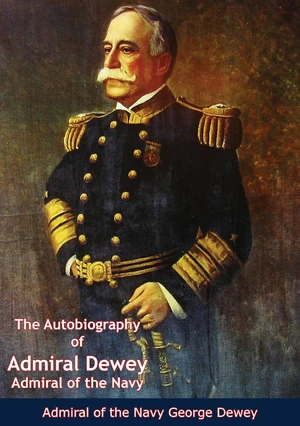One of America's best known naval heroes whose life straddled two centuries and several stages of naval development, tells his own story.-Print ed. George Dewey was born on December 26, 1837 in Montpelier, Vermont. Upon his graduation from the Naval Academy in 1857, he was commissioned as a lieutenant in 1861. During the Civil War he served with Admiral Farragut during the Battle of New Orleans and as part of the Atlantic blockade. From 1871 until 1896, Dewey held a variety of positions in the Navy. In 1897 he was named commander of the Asiatic Squadron, thanks to the help of strong political allies, including Assistant Secretary of the Navy, Theodore Roosevelt. Roosevelt's help was also essential in supplying Dewey with guns, ammunition, and other needed supplies so that his fleet would be prepared if war broke out with Spain. An aggressive commander, Dewey ignored China's neutrality and took on coal for his fleet at Mirs Bay. He was forced to leave Hong Kong on April 25, but not before the U.S.S. Baltimore had arrived from Honolulu with needed ammunition. Thus prepared for battle, Dewey launched his attack, through mined waters and firing shore batteries, on Admiral Patricio Montojo's slow, outmoded, under-supplied Spanish squadron at Cavite in Manila Bay. On May 1, he engaged the Spanish forces and demolished them, inflicting very heavy casualties. His troops occupied the bay and Manila itself alone until General Wesley Merritt's soldiers arrived in August. News of the victory in the Battle of Manila Bay reached President McKinley on May 7 and soon Dewey became a national hero. Congress awarded him a promotion to real admiral and handed out citations to members of his fleet. Although he thought about running for president, he settled for writing accounts of his famous victory and publishing his autobiography in 1913.
História ceny
7. 9. 2022
0,87 €

